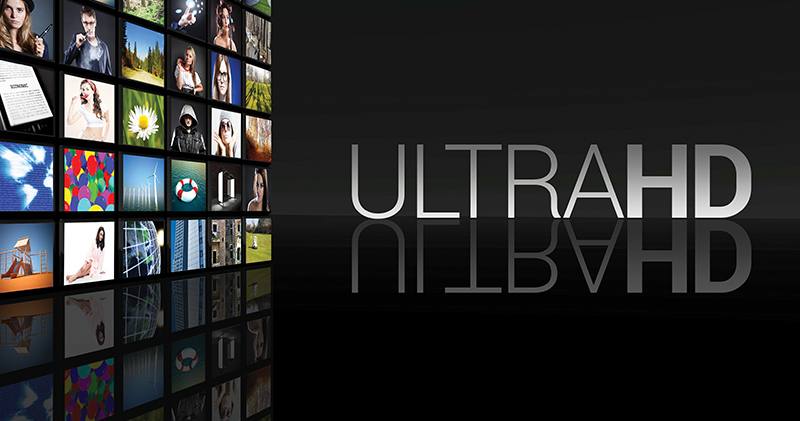UHDTV
By the PHANTOM
Hey, leeme call your attention to another article that you video dudes still left in the industry (if any) will appreciate. You can find it at https://www.tvtechnology.com/opinion/upconversion-today-what-does-resolution-really-mean? Jim talks about modern UHDTV, the thing following HDTV — add a “U” for “ultra.” We haven’t had to deal with a new standard for TV transmission now for what, a couple of decades, and you know these engineers: if everything works, it doesn’t have enough features. But the march onward shall not be stopped, and those who try to stop it will be punished by relegation to the trash heap of technology.
So standard HDTV isn’t enough. It only has about 1k of resolution (we’re not sure how the “k” came to be used here: the actual resolution works out to about 2 million pixels, uncompressed). But movies are made for theaters in 4k and sometimes 8k resolution. Why not do the same for the home viewer? Never mind that the human eye cannot discern this higher resolution at common home viewing distances. But there is more to UHDTV than resolution. It also provides a wider color gamut (the range of colors that can be reproduced, compared with the wider range of colors that can be perceived by humans), and it provides finer gradations of those colors. Classically, we digitized each of the three primary colors using 8 bits of resolution. UHDTV uses 10 bits of resolution, to improve the gradation of colors that can be transmitted. These latter two characteristics (gamut and gradation) may be more important in improving home viewing than is resolution.
But the switch to twice the resolution of the picture and the switch from 8 to 10 bits to represent each color, means a whole lot of additional data that must be transmitted. And that means even higher data rates we have to transmit. Or does it? For current broadcast TV, we are still restricted to the old ’90s-era MPEG-2 compression format. That has long been supplanted by MPEG-4 compression, which offers lower bit rates (all else being equal). Except broadcasters can’t use it: It’s not in the broadcast standard (ATSC-1) and hence not in every consumer receiver ever produced (it is usually found in newer TVs, but not older ones). MPEG-4 worked because engineers had gained additional understanding of how to compress a signal to get more bang for the buck, compared with the understanding we had back in the MPEG-2 days. But had we reached the ultimate compression capability with MPEG-4? Nope, turns out there was yet more improvement to be had, and we call the result of this further improvement HEVC (for high efficiency video coding).
HEVC has been a thing for a number of years. If you’re as old-fashioned as a certain phantom, you sometimes still buy DVDs, and DVDs are available in the UHDTV format (they are called “4k”), along with DVD players that know what to do with all those extra bits. Some streaming services have been offering UHDTV material for a long time, though sometimes it may be compressed too much for optimum viewing.
Broadcasters are in a different situation from us. That difference arises from the way that economics work in their part of the infrastructure. Broadcasters own nothing in the viewers’ homes. The viewer owns it all, and you DON’T mess with the viewers’ ability to see TV. A broadcaster doesn’t dare do anything to prevent the viewer from seeing his programs, because that would cost the broadcaster eyeballs, and that reduces what he can charge for commercials. And you want to see mad? Just imagine a viewer who all of a sudden can’t see his favorite program because the broadcaster upgraded his transmission format to something new, and stranded the viewer’s TV that he paid a whopping $150 for 10 years ago. Now that’s mad! So there had better be a way to upgrade to a new system without stranding the viewer’s investment in his TV, and without costing the broadcaster eyeballs. Next time, maybe we’ll talk about how it was done to upgrade from standard definition to HDTV, and the plan to upgrade from HDTV to the new UHDTV.
Spoiler alert: same challenges both times, different solutions, each geared to prevailing technical and economic situations.
 The Phantom
The Phantom
the.phantom@youwontfindmeanywhere.com
You never know when The Phantom is standing right beside you. Sometimes he is in a meeting with you or walking the floor at your favorite cable show. Sometimes he’s hanging with the suits and other times with the front liners. But be assured, The Phantom sees all, The Phantom knows all and, most importantly, The Phantom tells all.
Shutterstock




